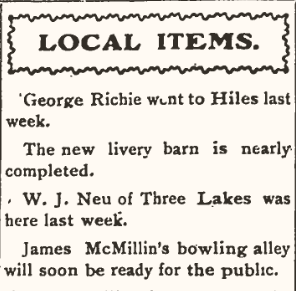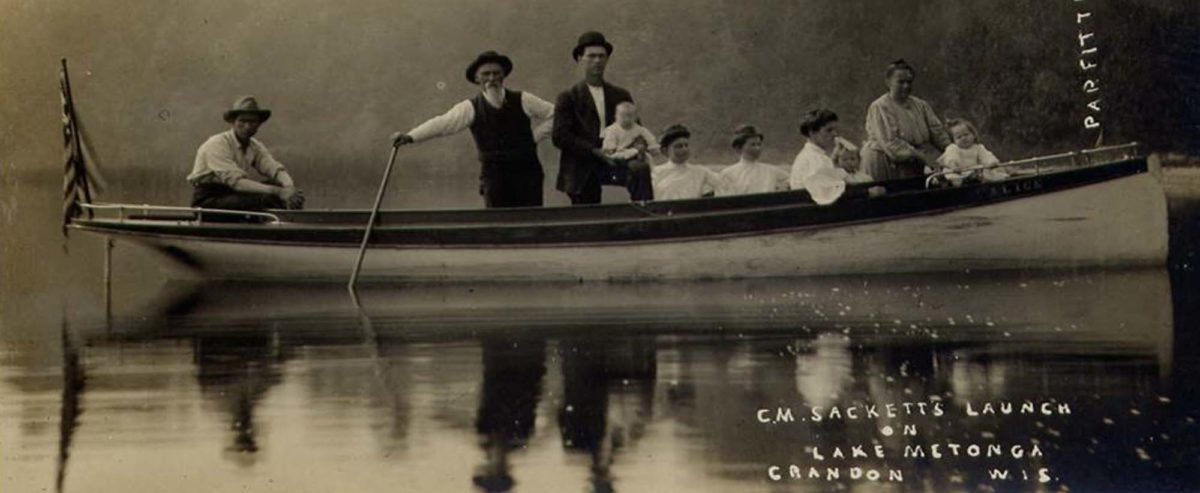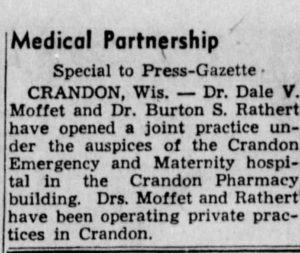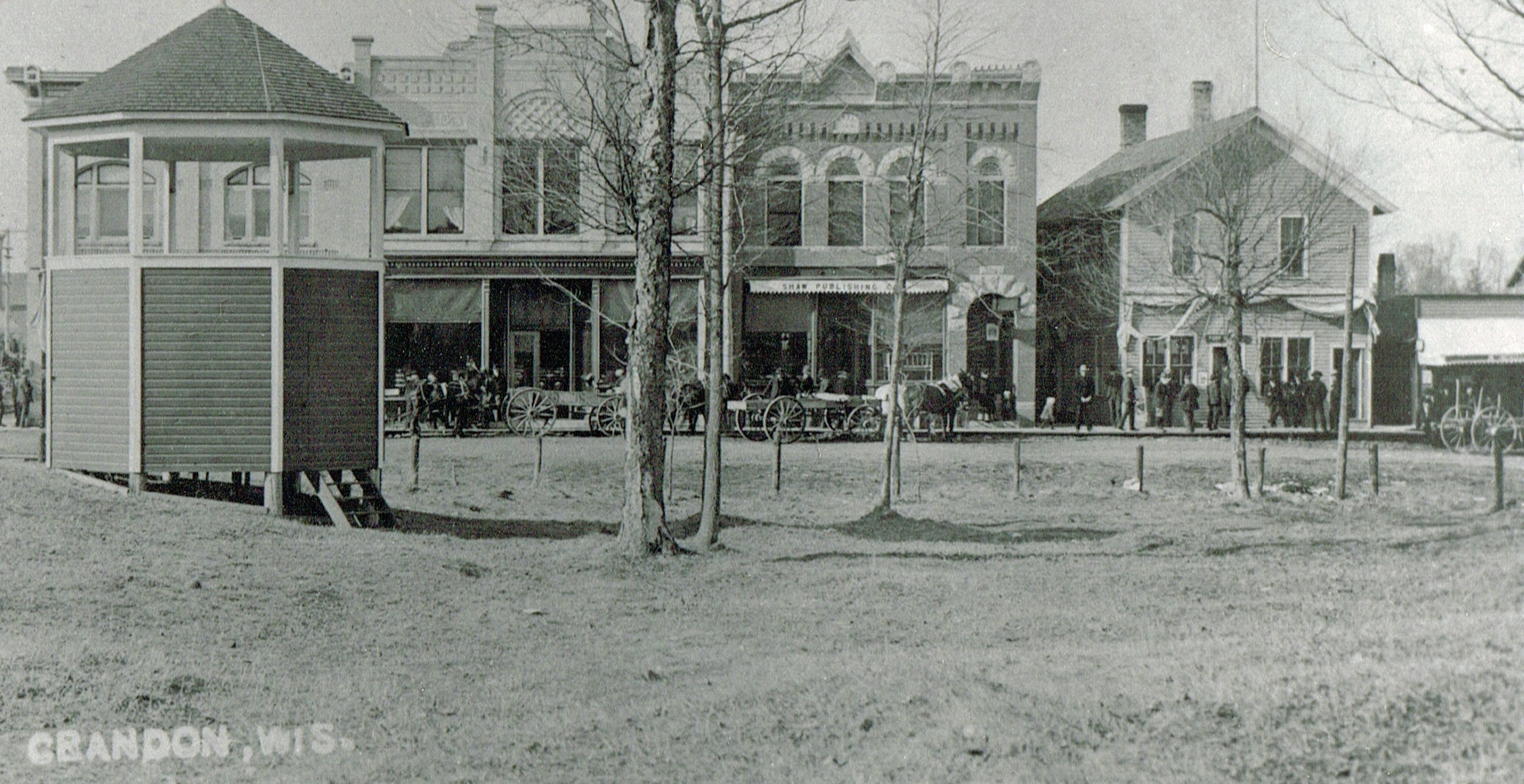This script was originally written for the 2018 Crandon Drama Club Walk & Talk. Historical research was conducted by members of the Crandon Area Historical Society and student researchers Nolan Wilson, Tucker Krause, and Rachelle Cappel. Joe and Dort Keller were portrayed by Rob Keller and Tia Poe.
Joe: Good evening. My name is Joe Keller, Jr. and this is my dear wife Dort. We are the proud owners of the Crandon Arcade. I actually bought the Crandon Arcade back in 1961 with my first wife Margaret Greene Keller. Together my wife Margaret and I ran the Crandon Arcade, including the bowling alleys, bar and restaurant while at the same time raising our twin boys Bob and Bill and daughter Deb. Unfortunately, our family suffered a tragic loss when my dear Margaret passed away in 1963.
Dort: Yes, that was a tragic loss for your family Joe dear. I too had lost my first husband Archie Wickham in 1956. We had five children: Johann, Jim, John, Harold and Marie. It was a sad time for our family. Luckily I had a large family for support the years after he did. The whole Gretzinger family helped me out. Each one of my 6 brothers and sisters helped out the years after Archie died. Anyways…Joe and I both being widows decided to marry in 1964 and we’ve been happily married since.

Joe: Honestly, part of the reason we’ve been so happy together is this here building, the Arcade. You see, there’s not always been a lot of things to do in Crandon. We don’t have a community band anymore, the theaters are gone and the Opera House burned in 1912. But through all of that, Crandon people have enjoyed bowling. Yes sir! There have been people bowling in Crandon since 1904! That’s even before this old courthouse was built.
Dort: Yes Joe, but they’ve only being bowling here at this location since about 1920. Before that they were bowling in Jim McMillian’s bowling alley. I think it might have been located on Lake avenue. Frank Granger and James Duff took it over in in 1907 and added a restaurant too.
Joe: That’s true Dort. But they’ve been bowling! This building was built in about 1920 when Walt and Blanche Carter owned it. You know Walt, he’s the son of Henry and Etta Carter who live over near the Carter Garage. They bought the Patterson building and the McClinchy building that were located right here. Patterson was the guy who two fake legs but he managed to get around his pool hall just fine. Walter and his wife Blanche must have turned those two buildings into this one. That may explain why the basement of the Arcade looks like it does with tunnels and separate rooms. The Carter’s sold the bowling alley to a German girl named Rosa Ammer, in 1947. Oh, she was a tough one that Rosa. High school boys would give her a hard time in her restaurant and she’d chase them out and send them packing.
Dort: Are you sure that was Rosa? I recall Ula Plummer running the Arcade restaurant for awhile. Either way, you are now the owner and while it does take up a lot of your time, you sure do enjoy spending time up here with the bowlers.
Joe: Yes I do enjoy it. Even if some of those bowlers try to talk to me about City politics. Back in 1961 when I was the Crandon City Clerk and in 1964 when I was president of the Crandon Chamber of Commerce, I had to make sure politics didn’t interfere with me running the bar.
Dort: You did a good job, honey. And the Arcade is more than just a bar. According to the Green Bay paper it’s a restaurant with atmosphere! Ernie Wilson’s giant murals painted on the alleys sure do attract tourists. They sure do seem to like the murals that feature racoons climbing trees, deer bounding from the forest and that darn bear fighting over the beaver dam.
Joe: Oh, dear. Look at the time. Its time for us to get back to our bowlers and let these fine people move along to their next stop.



